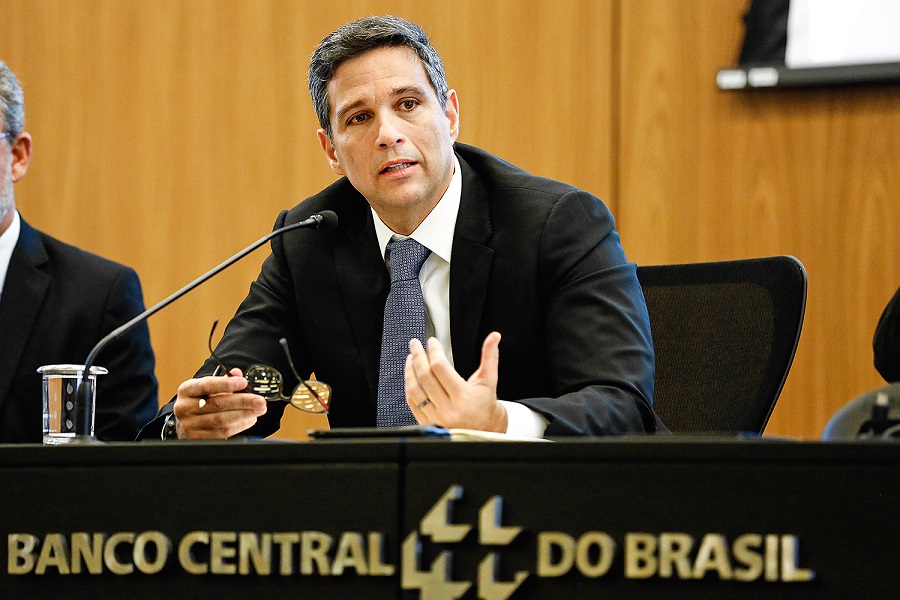RIO DE JANEIRO, BRAZIL – The market significantly reduced the likelihood of the Central Bank tightening the pace of a SELIC hike in the next Monetary Policy Committee (COPOM) meeting next week. Meanwhile, the dollar fell as investors assessed the below-expected U.S. consumer inflation data.
At 10:25 AM, the Interbank Deposit (DI) rate for January 2022 fell from 7.325% in the last adjustment to 7.03% and the DI for January 2023 sank from 9.16% to 8.95%. In the longer maturity segments, the rate of January 2025 contract fell from 10.18% to 10.05%, while the DI for January 2027 retreated from 10.49% to 10.44%.

In turn, the U.S. currency dropped 0.19% against the Brazilian real, closing the spot foreign exchange market at R$5.2135. Later in the day, however, the dollar recovered, rising to R$5.250.
Campos Neto reiterated at an event sponsored by BTG Pactual that the monetary authority will take basic interest rates to the level needed to anchor inflation – “whatever it takes,” in central bankers’ jargon.
However, he said that it should not change the pace of hikes implied in the plan signaled by the institution in reaction to the release of new indicators.
“We are going to take the SELIC to where it is necessary, but it doesn’t mean we are going to change the plan according to each high frequency number,” Campos Neto said at the MacroDay 2021 event.
According to Modalmais’ chief strategist Felipe Sichel, “it is now clear that the Central Bank is considering an extension of the [interest rate hike] cycle rather than an increase in intensity. It is relevant information, because it reinforces that the pace of hikes should be maintained.”
In the COPOM options market traded on B3, the market reduced the chance of a 1.25 percentage point increase in the SELIC in the next COPOM meeting from 44% at yesterday’s closing to 15.5%. The chance of a 1-point squeeze jumped from 30% to 80%.
In his last public appearance before COPOM’s silent period, Campos Neto also stated that services inflation was a key factor to be analyzed in Brazil in the current inflationary scenario and that part of the spread of price hikes in this group was expected by the monetary authority.
Earlier in the day, the volume of services in July released by the Brazilian Institute of Geography and Statistics (IBGE) was up 1.1% on the month and 17.8% year-on year.
However, the day’s highlight was the consumer price index (CPI) in the United States. The CPI rose 0.3% in August from July and advanced 5.3% year-on-year, according to data released Tuesday by the U.S. Bureau of Labor Statistics.
Core CPI, which excludes the most volatile part of food and energy prices and has been more closely monitored by the Federal Reserve, rose slightly by 0.1% in August from July, slowing from the 0.3% rise in July from June. The August advance was expected to reach 0.3%.
Modalmais’ Sichel also points out that this was the lowest reading of the underlying (core) inflation in the country since February. “It illustrates the transience of inflation in the United States,” he says, citing that the figure released today revealed the focus of the acceleration on specific goods sectors and also on the energy component, which should reinforce the debate on the transient nature of the price hike.
“In contrast, part of the weakness is attributed to the volatile transport services group. We also continue to monitor housing prices as a potential risk. In any case, the tapering outlook remains in place for this year as widely reported by the Federal Reserve.”

